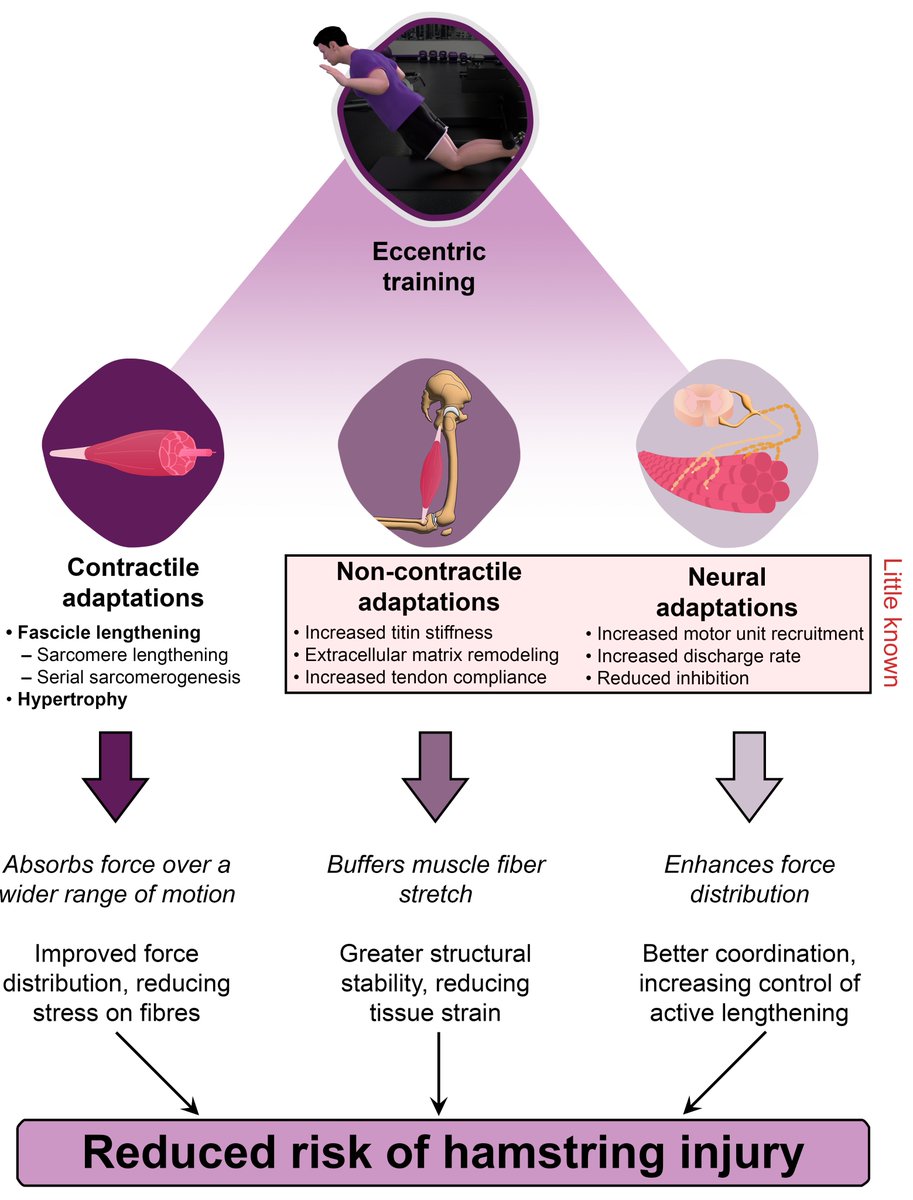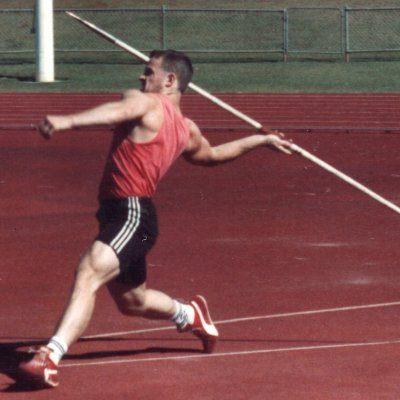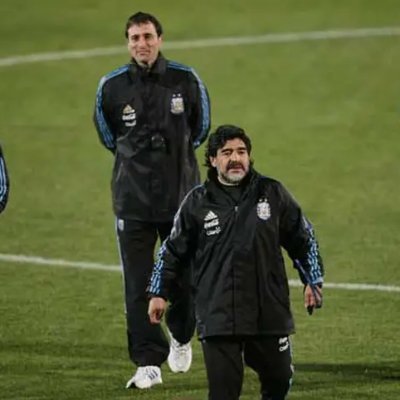
Max Andrews
@MaxAndrews100
Followers
611
Following
570
Media
14
Statuses
117
Sports Scientist | BExSS (Hons1) UQ
Brisbane
Joined June 2018
Hamstring injuries are still the most common muscle injury in field sports. Our new @SportsMedicineJ review asks: why do they keep happening, and how can eccentric training help? https://t.co/i2aNckiIDF
@ActivateGlutes @GlenLichtwark @patricio_ppm @UQHealth @QUT @unisqaus
3
47
174
Hamstrings often tear when sprinting at max speed—eccentric load + delayed activation = trouble. Nordic curls help, but prevention goes beyond muscle length: https://t.co/fDUf9aGYCs Smarter strategies are needed. Start with Invincible:
link.springer.com
Sports Medicine - Hamstring injuries are a major concern in sports owing to their high incidence and recurrence rates, highlighting the need for a deeper understanding of their mechanisms and...
0
2
3
Recent hamstring research... https://t.co/RwnrgziqKW A more detailed look at hamstring adaptations to NHE than has been done b4. New methods & new insights from Anoosha Pai, @MaxAndrews100 @GlenLichtwark and colleagues.
pubmed.ncbi.nlm.nih.gov
The 9-week NHE training substantially increased hamstring muscle volume with greater hypertrophy in ST and BFsh. Hypertrophy was accompanied by increases in fiber tract lengths and cross-sections...
1
2
8
Hamstring muscle architecture and microstructure changes following Nordic hamstring exercise training and detraining (open access) https://t.co/K7mDqtSy38
0
1
2
Hamstring muscle architecture and microstructure changes following Nordic hamstring exercise training and detraining https://t.co/xcOJzM0oBA
1
21
126
🆕"Consistent training is essential to maintain all the muscle adaptations induced by NHE training" ➡️To be taken into account in S&C program in professional ⚽️ 👉A. Pai et al, 2025 🇺🇸 📂Open Access: https://t.co/Q7LlKTQtuR
0
1
3
🚨🦵Hamstring injury 🔴 Prevention may be misunderstood 🟡 Most happen in sprinting when hamstrings face 🔝 eccentric load 👀 Eccentric training helps but neural + non-contractile adaptations: key 📩 Comment HAMS to get an visual of protective adaptations through ecc training
54
6
69
Hamstring injury mechanisms and eccentric training-induced muscle adaptations: Current insights and future directions. @MaxAndrews100 @GlenLichtwark
https://t.co/H9DStCoZt6
link.springer.com
Sports Medicine - Hamstring injuries are a major concern in sports owing to their high incidence and recurrence rates, highlighting the need for a deeper understanding of their mechanisms and...
0
4
12
Greater focus on adaptations to muscle behaviour during exercise (e.g., operating lengths), non-contractile (e.g., titin stiffness, tendon compliance) and neural adaptations (e.g., motor unit recruitment, inhibition) is needed to improve hamstring injury prevention strategies.
0
0
2
While eccentric training is known to increase resting muscle fascicle length (initially via sarcomere elongation, later via serial sarcomerogenesis), current research overlooks how these adaptations influence hamstring function during exercise.
1
1
2
Hamstring injuries often occur during the late swing phase of running due to delayed or insufficient neural activation and the high eccentric forces required at long muscle lengths
1
0
2
Why did three @brisbanebroncos players tear their hamstrings in one game vs the Storm? 🤕 In the @ConversationEDU, we unpack why hamstring injuries happen so often — and how sprinting & eccentric training can help prevent them Anoosha Pai @ActivateGlutes @MBourne5 @patricio_ppm
More than 80% of hamstring injuries in sport occur during sprinting. Two training approaches can help reduce these injuries. @MaxAndrews100 @Griffith_Uni @QUT @UQ_News @unisqaus
0
3
6
Very interesting review by @TonyBlazevich et al on the current evidence about sarcomerogenesis and its application to ecologically valid exercise protocols. Still much we don't know and reason to be cautious when drawing conclusions on the topic 💪 https://t.co/vs2alfTO14
1
15
85
🚨New study on Hamstrings Volume & Architecture ➡️ 9wks Nordics 🚨 Findings 🧐 - muscle volume ⬆️ in all muscles but most in ST (26%) & BfSh (22%) - Fibre tract length ⬆️ in all bt mostly ST (18%). - Fibre tract lengths all returned to BL ➡️ 3wks detraining. key figure below 👇
3
9
61
Great work lead by Anoosha Pai Reed Gurchiek @patricio_ppm Marco Barbier @tfrieds75
@fkogan Garry Gold Valentina Mazzoli @GlenLichtwark Scott Delp @Dr_ASChaudhari
@Stanford @UQHealth @WuTsaiAlliance
@JSHS_MedHealth
#SportsScience #HamstringInjury #EccentricTraining
0
0
0
Nordic hamstring exercise training induces non-uniform adaptations in the hamstring muscles. ST and BFsh showed the largest increases in volume and fibre length. Fibre length gains reversed after 3 weeks detraining, but hypertrophy mostly remained. https://t.co/cVbFRYFxyX
1
11
31
Multiscale hamstring muscle adaptations following 9 weeks of eccentric training https://t.co/ypNnOdWSRb
0
1
2
Multiscale hamstring muscle adaptations following 9 weeks of eccentric training https://t.co/ypNnOdWl1D
0
4
8
Training with focus on eccentric movements show increased fascicle length, muscle volume, and knee flexion! Could be great for older adults and populations where the concentric phase of exercise is especially hard. #PSUClinExPhy @invinceible24
Multiscale hamstring muscle adaptations following 9 weeks of eccentric training https://t.co/ypNnOdWl1D
0
2
6
‘Load and muscle-dependent changes in triceps surae motor unit firing properties in individuals with non-insertional Achilles tendinopathy’ Our latest study has just been published in @JPhysiol - we found multiple neuromechanical adaptations induced by AT https://t.co/w9GklCYa7f
physoc.onlinelibrary.wiley.com
Abstract figure legend Motor unit firing properties of the medial gastrocnemius (MG), lateral gastrocnemius (LG), and soleus (SO) muscles were assessed using high-density surface electromyography...
1
8
38


























